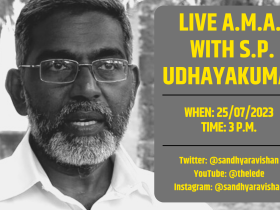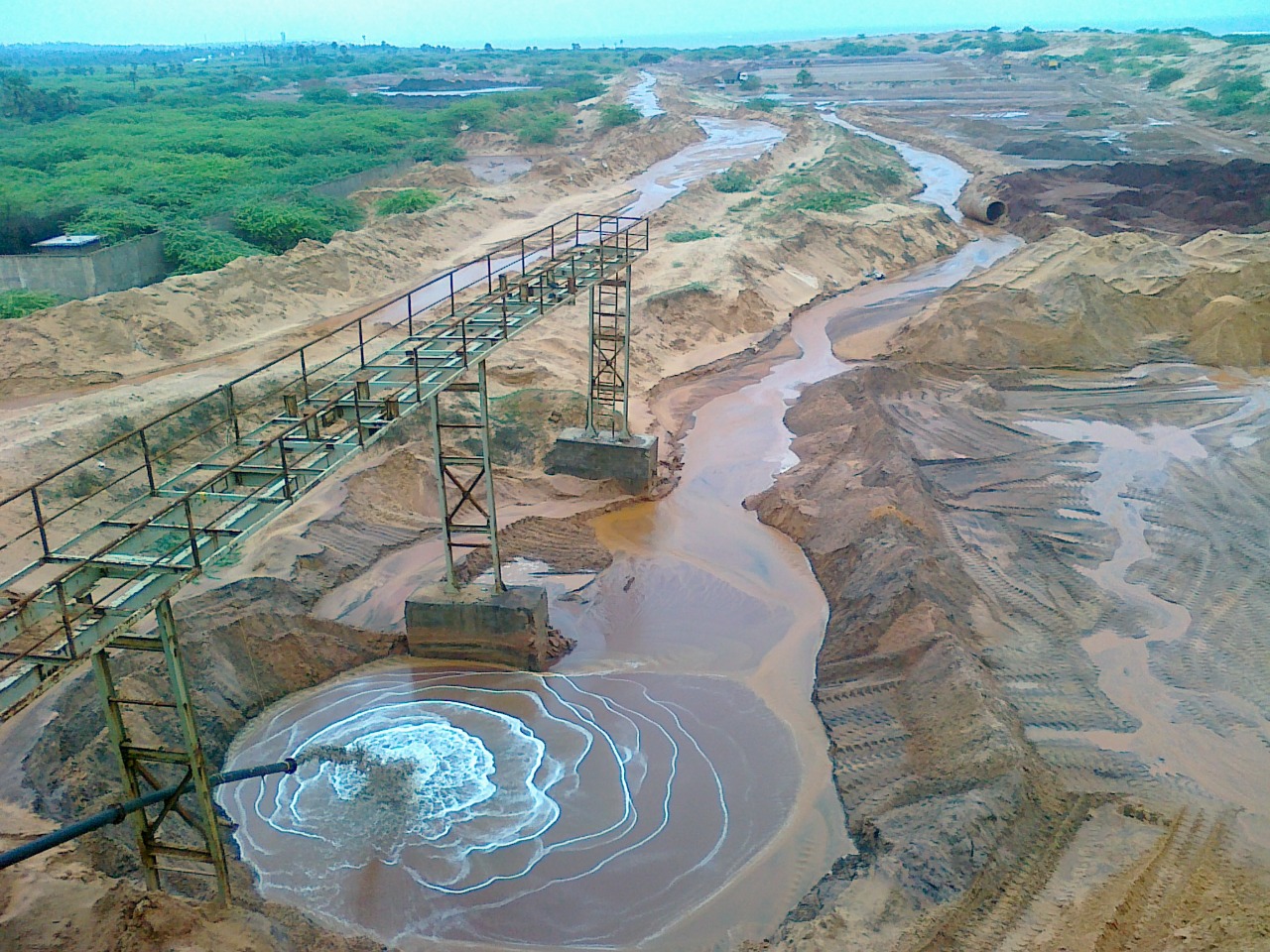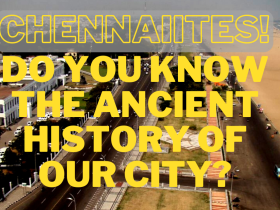On 01 January, the Chief Controller of Mines at the Indian Bureau of Mines (IBM) constituted a committee.
This committee was formed to “to enquire into the matter of illegal mining and the roles and responsibilities of officers of Indian Bureau of Mines (IBM) in of (sic) BSM Mining plan/Scheme of Mining in Tamil Nadu and lapses in enforcement of Acts and Rules in administration of BSM, processing and disposal,” according to the report, a copy of which is with The Lede.
Chaired by JR Choudhary, Controller of Mines (South Zone) based in Bengaluru, this committee was to submit its report within a month. The committee examined 64 mining leases in Tamil Nadu.
The conclusion of this report though is vintage government – an admission of lapses and collusion but an overall vindication of their officials.
“The Committee has observed certain lapses on the part of IBM officers like retrospective approval; approval of replenishable reserves in hinder land areas; approval of Mining Plans/Schemes of Mining without field inspections; violations of MCDR 1988 were not taken to logical end; approval of annual productions more than the reserves establishment; approval of Mining Plans/Schemes of Mining without referring to AMDER etc.
However, the Committee has observed that these lapses are not intentional and mainly due to want of clear cut instructions and as per the practices in vogue at that time.” (sic)
Mining The Coasts Of Tamil Nadu What Does IBM Have To Do With Beach Sand Mining?
To understand what the issue is about, it is crucial to know what role the IBM plays as part of the multi-departmental convoluted permissions and approvals process that go into allowing private players to mine beach sand.
IBM is basically the first stop for a private beach sand miner after land has been procured for mining.
A geologist who is authorised by the respective state government (called a Recognised Qualified Person) has to prepare a mining plan for the private miner, detailing how much sand they will mine over a period of say five or ten years, what quantum of each mineral they expect to get from that sand (called recovery percentage) and the replenishment rates of the area to be mined. Replenishment rates are the rate at which the minerals will be replaced naturally in the sand in that area.
Recovery percentages and replenishment rates both vary from area to area and also depend on whether the land to be mined is inland or near the coast.
Once this mining plan arrives at the IBM, respective zonal officers must conduct a field visit to ensure that the data provided by the private miner corresponds to the official data available with IBM.
Further, miners have to submit an annual report of how much mineral they have mined and IBM must scrutinise this closely to ensure that recovery percentages are not hiked (indicating illegal mining) and that the original mining plan corresponds to the actual amount of sand mined. If the private miner is mining more sand than allowed by the IBM-approved mining plan, officials must take action.
The IBM also fixes royalty rates for each mineral processed from beach sand.
IBM could approve the mining of garnet and sillimanite alone until July 2016. In that month, the Centre classified all beach sand minerals including garnet and sillimanite as atomic minerals, requiring mining permissions from the AMD.
As far as minerals such as ilmenite, rutile, leucoxene and zircon are concerned, the approvals for mining were processed by the Atomic Minerals Directorate (AMD) which comes under the Department of Atomic Energy.
In February, as The Lede had already reported, the Union Ministry of Mines amended the Mineral Concession Rules, in effect ensuring that no private player can mine beach sand.
Exclusive: The End.What Triggered The Inquiry
The trigger for this sudden inquiry into the role played by their own officials in helping the illegal mining and transportation of beach sand minerals, was a report submitted by the Amicus Curiae to the Madras High Court as part of the hearings in an ongoing PIL.
“Amicus Curiae has also attributed failure on the part of IBM Officials to examine the production indicated in the Annual Return and to take strict action against lessees, whose production exceeded the approved quantity,” the IBM report quotes.
The Amicus Curiae’s reported also speaks about approvals given by IBM officials for mining plans without conducting the mandatory field inspections.
A question was also raised as to how IBM officials approved mining plans citing recovery of over 50% of beach sand minerals from the beach sands, while official records indicate that minerals are in much lower composition.
Another issue pointed out was that of the IBM failing to take action even when irregularities had come to their notice.
“As regards lapses on the part of IBM, the Amicus Curiae cited two case studies of issue of order of suspension of mining operations under Rule 13(2) of Mineral Conservation and Development Rules 1988 and pointed out that it took 4-5 years for IBM to finally issue an Order of Suspension of Mining Operations.
It has been alleged that IBM advised the mining lease holders to apply for modifications of Scheme of Mining so as to regularise the excess quantity removed. For reasons best known, IBM officials did not seek to enforce the penal provisions of the MMDR Act, even when they fully well aware that the mining companies were continuing to transport quantities of raw sand and minerals in excess of the permitted quantities and that the production was taking place even when the mining comprises had applied for approval of Scheme of Mining.” (sic)
The Gagandeep Singh Bedi report is also quoted as having pointed out that very low royalty rates were fixed and approved by the IBM for beach sand minerals in Tamil Nadu alone. For instance – “in August 2013, as per the data published by IBM, the sale price of Garnet was Rs 377 per MT for Tamil Nadu.
However, the same is Rs 8,833 per MT for Andhra Pradesh and Rs 5,500 per MT for Odisha,” says the inquiry committee report. In January 2014, the IBM increased the Tamil Nadu garnet royalty price to Rs 5600 per MT but this is still below the rate of royalty for garnet in other states.
The Bedi report also points out that the actual export price of garnet was Rs 15,000 to Rs 18,000 per MT while a mere Rs 377 per MT was being collected as royalty, causing years of loss to the state exchequer. Instead of calculating the royalty on an ad valorem basis, the IBM seems to have fixed a very small price for Tamil Nadu alone, a finding that ought to be have been picked up by the officials many years in advance.
Who Are These Officials & What Did They Do?
Let us look at some of the cases where officials turned the other way or even actively colluded with private miners to allow illegal mining of beach sand minerals to continue.
The IBM’s internal inquiry report then goes on to vindicate their officials.
“The practice of retrospective approval of Mining Plan/Scheme of Mining was in vogue in IBM so as to rectify the violations of Rule 13 (1) of MCDR 1988. The practice was stopped only after the acceptance of Justice Shah Commission Report to enquire the illegal mining activities of Iron and Manganese ore,” it says.
As for approvals of mining plans or schemes of mining without site inspections, which is a violation, the IBM internal inquiry explains it away thus – “The approval of Mining Plan without site inspection was mainly because the mines were not operational.”
This is clearly a chicken and egg situation – if the field inspections had been done, they could have found out whether mining was taking place or not. The IBM appears to have simply decided to take the miners at their words.
As for the lapses in pulling up miners who were mining more than the allowed quantity, the IBM again has an excuse. “IBM was failed to monitor the production proposals vis-à-vis actual production due to lack of effective mechanism like that of online system. The violations were not taken up to logical end mainly due to lack of legal cell and proper legal advice,” says the report.
The one lapse admitted by the IBM is that of hiking the replenishment reserves in mining plans in a bid to help the miners mine more.
“However, approval of replenishable reserves in hinder land areas where there is no possibility of replinishable reserves and without examination of any scientific study in this regard can be considered as lapses on the part of IBM.” (sic)
A total of 17 officers of the IBM have been involved in granting approvals to problematic mining plans to the private beach sand miners of Tamil Nadu.
Of these, nine have retired. The maximum number of field inspections have been carried out by A Sanjeeva Rao, AMG, C Parmeshwaran, then ACOM, Manish Maindiratta, DCOM, TP Bhaskar, then AMG (Retd) and KK Tardia, then ACOM.
One official alone – TK Rath – who was due to retire as Director General of IBM, was suspended on the day of his superannuation for irregularities in approvals of mining plans. It is unclear as to what further action the department has taken with respect to him.
The report gives a clean chit of sorts to other officers. “Thus the lapses on the part of officers such as Shri Anupam Nandi, DCOM, Shri C Parmeshwaran, the then ACOM, Shri Phalthudurai Rajhen, AMG and Shri A.S. Sanjeeva Rao can considered as failure of system as well as individual.”
The report also recommends further probe into why royalties of beach sand minerals were fixed at such low rates for Tamil Nadu alone.
“Collusion among the miners, the politicians and the officials cuts across most minerals in India,” said EAS Sarma, retired bureaucrat who is a keen environmentalist. “Even without getting a formal lease, mining activity is often taken up. Miners extend their activity into unauthorised areas adjacent to the leased area. There have been instances of miners extracting minerals not covered by the licenses. The only way to preempt such collusion is by making the regulatory authorities professional and independent and rendering their functioning totally transparent. Mining leases should be given through transparent competitive procedures. In the case of strategic minerals, upper thresholds should be fixed for annual extraction to ensure conservation in the long run. In some cases such as Monazite, no exports should be permitted,” he said.
Attempts to reach the IBM by the Green Blood Project collaboration did not yield any results.
Will the IBM actually take firm action to send a message to serving and future officials that collusion and corruption will not be tolerated? Or will this report too simply vanish into the dusty shelves of their offices in Nagpur?
And will other departments that are involved with giving permissions, approvals, licences and who are supposed to enforce the law – both state and Centre – take similar steps to identify errant officials?
The Atomic Minerals Directorate, its parent Department of Atomic Energy, the Tamil Nadu government and its district administration, its police – all of these will need to answer to the Madras High Court when the time of reckoning arrives.












Leave a Reply